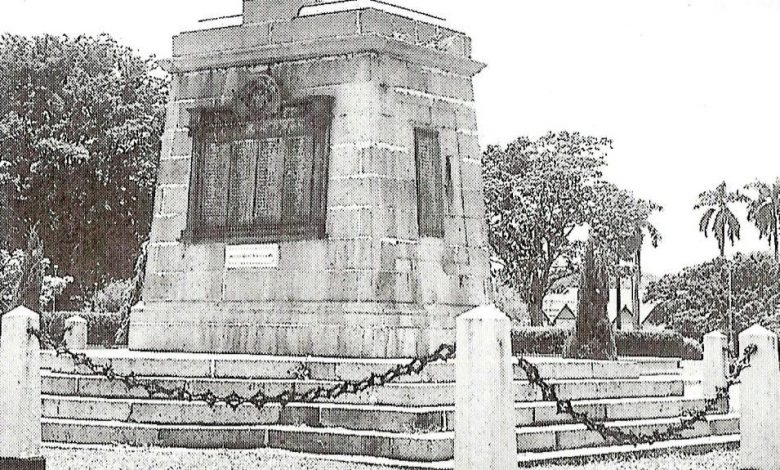Missing Memorials – Malaysians Have Short Memories


Nostalgia
By Ian Anderson


Take for example the two Birch monuments: the JWW Birch Clock Tower (dedicated in 1909 and still standing) and the EW Birch Fountain. The former has suffered the loss of the bronze bust (and descriptive plate) of the first British Resident murdered in 1875. The latter, erected in 1913 by the Ipoh Chinese business community, to mark the contribution Sir Ernest Birch (British Resident 1905-1910) had made to Ipoh town, has disappeared totally.


Then, there is the cenotaph (mentioned above), dedicated in 1927, which had (at one time) three cast bronze plaques nominating this British and Indian servicemen from Ipoh who lost their lives defending freedom. These plates disappeared sometime in the 1970s leaving the four sides of the cenotaph completely blank. Some 25 years later, thanks to a retired police officer, one of the plates was found in a government store and replaced. The remaining sides of the memorial now have simple, modern plastic plates without names of those who fell.
Those British, Commonwealth and Malaysian citizens of Ipoh, who died in the Malayan Emergency, also, at one time, had their own memorial in town. It was built in 1960 to mark the official end of the Emergency and known as the “Emergency Memorial Park”. It sported a Bunga Raya fountain, a plaque and associated landscaping. Sadly, it simply disappeared without trace when the State Mosque car park was extended! It seems Ipoh does not wish to remember those who gave their lives to save us from communism. The photograph is from a postcard that reads “This lovely popular park located in the town of Ipoh just after the ‘Merdeka’ – independence of Malaya, is considered to be one of the best beauty spots in the Federation of Malaya, will not fail to attract throngs of people living in the town.” Huh!




Similarly, the Batu Gajah Hospital also had a memorial plaque mounted on the old heritage building. It was last seen in a store there in 1995. Recent enquiries at the hospital have provided no clues as to its whereabouts although they have promised to search for it. This particular memorial was dedicated to the memory of six of the staff, five of which were British ladies drowned at sea in an attempt to escape from the Japanese invaders. This plaque has recently raised the interest of the Malayan Volunteers Group (MVG) in UK. This group developed from an informal gathering of a few British Malayans who were Volunteer Veterans. As their numbers gradually decreased over the years, the tradition was carried on by their children and families. At their last meeting questions were raised about the location of this memorial plaque. Again, can anyone help us locate it and have it reinstalled in its rightful place?
Henry Waxman (Politician, Strategist and Orator) summed up Ipoh perfectly when he said:
“Memorials become relics if they do not stir our modern conscience.”


